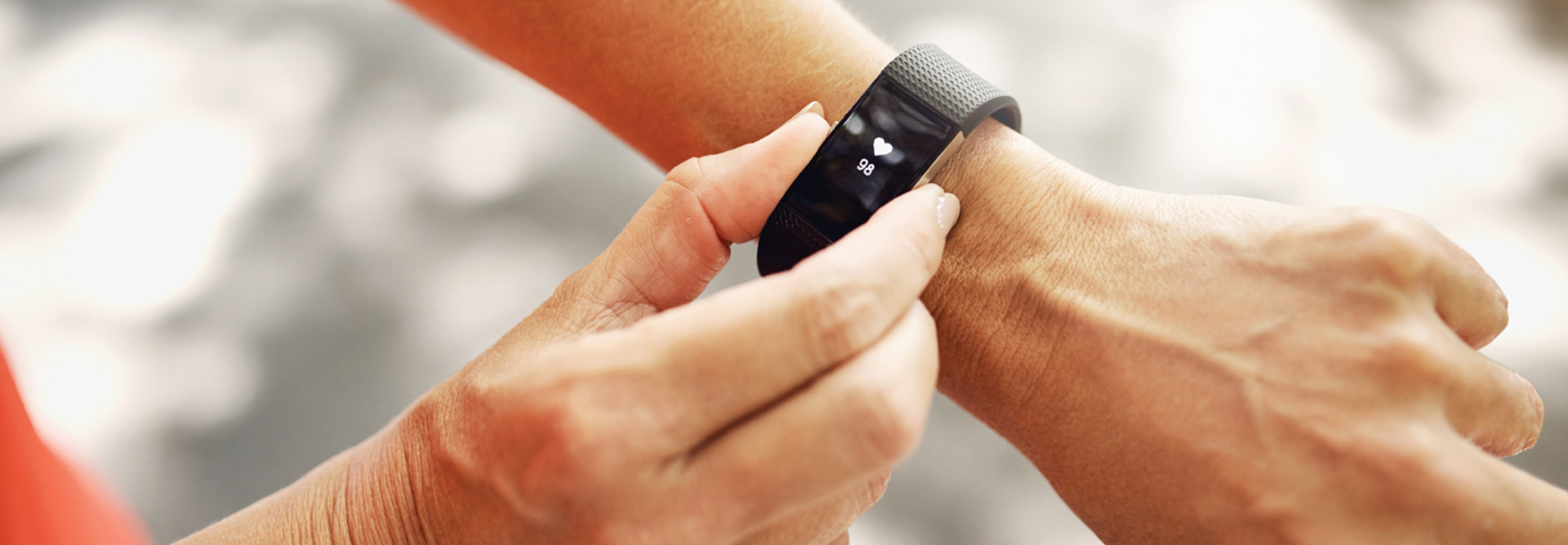As part of the ongoing search for COVID-19 solutions, researchers have found that data from wearable devices — Apple Watches, Fitbits and the like — can act as an early warning system in detecting the illness.
According to Fortune, Apple, Fitbit, Garmin and other wearable device makers have donated devices to further early studies, even encouraging their own customers to participate in them.
Most recently, Fitbit and Apple have teamed up with the Stanford Healthcare Innovation Lab on its COVID-19 wearables study. While the findings have yet to be published, there’s evidence that the idea works. Stanford researchers were able to detect signs of the coronavirus before or at the time of diagnosis in in 11 of 14 patients by studying changes in their heart rate documented by Fitbits.
“There’s a huge amount of promise in these new technologies,” Dr. John Brownstein, chief innovation officer for Boston Children’s Hospital and a professor of epidemiology at Harvard Medical School, tells ABC News.
If smart devices, already worn by 21 percent of Americans, can truly flag early symptoms of COVID-19, they could help to safely reopen workplaces and schools — moving from their place as consumer gadgets to the front lines of healthcare.
MORE FROM HEALTHTECH: Discover why wearable devices have big potential to enhance monitoring and care delivery.
How Can Fitness Trackers Help Spot Symptoms?
Wearable devices constantly monitor and collect their wearers’ vital signs, which is key to identifying a potential COVID-19 infection.
Scientists have found that even simple data collected by the devices — subtle temperature or biometric changes like an elevated heart rate or respiratory rate — can be useful in limiting the spread of the disease. And studies like those conducted by Scripps Research are taking advantage of this.
The Scripps study, known as DETECT (Digital Engagement and Tracking for Early Control and Treatment), largely relies upon a rich and diverse set of anonymized data collected from thousands of volunteers wearing smart watches and fitness trackers. The goal: to study patterns that might reveal the onset of viral infection, before symptoms are present.
“Our medical professionals work closely with scientific researchers to further our collective understanding of the threats this novel coronavirus presents,” Dr. Laura Nicholson, a hospitalist at Scripps Health and associate professor of molecular medicine at Scripps Research, said in a news release from the organization. “The DETECT study is a great example of a collaborative effort to enhance the tools at our disposal to combat outbreaks and improve patient care.”
READ MORE: Learn how wearable tech can provide benefits for healthcare providers and patients.
Why Using Wearables to Detect COVID-19 Symptoms Makes Sense
The earlier a person’s illness is detected, the easier it is to prevent the spread of the virus.
“We’re looking at this asymptomatic and contagious stage,” Dr. Ali Rezai, director of West Virginia University’s Rockefeller Neuroscience Institute and leader of WVU’s COVID-19 wearables study, tells ABC News. “Our goal is to detect it early in this phase and help people manage better with work and public safety.”
Instead of asking people to take frequent coronavirus tests, which can be slow and costly, gathering data from wearable devices can act as a check on a person’s health. Individuals would be able to monitor their own health data via smartphone app to look for potential warning signs of COVID-19 infection.
“The more you know about your body and what your ‘baseline’ is, the more you’re able to tell if something is off,” Scott Burgett, director of Garmin health engineering, tells Fortune. “Because Garmin lets you see your health stats over time, it is easy to track trends and notice deviations.”
To get a better understanding of what unusual health data might actually look like, Scripps has taken its research one step further, partnering with transit and healthcare workers in San Diego. The collaboration with frontline workers at the San Diego Metropolitan Transit System and Scripps Health will examine workers who are at higher risk of exposure to COVID-19 and other respiratory illnesses.
“When your heart beats faster than usual, it can mean that you’re coming down with a cold, flu, coronavirus or other viral infection. Your sleep and daily activities can also provide clues,” Jennifer Radin, an epidemiologist at Scripps Research who is leading the study, said in the organization’s release.
“Being able to detect changes to these measurements early could allow us to improve surveillance, prioritize individuals for testing and help keep workplaces and communities safe,” she said.
Can Wearables Become Sickness Trackers?
While the idea of using wearables as a sort of symptom tracker shows promise, Brownstein tells ABC News that testing is still the only way to confirm whether an individual has actually contracted the coronavirus.
“You can’t really go buy a wearable and create a diagnosis of a particular condition," Brownstein says. “We have to be very careful in terms of over-interpreting the data.”
He adds that wearables should not be viewed as a replacement for telehealth or an in-person visit, but rather as complementary to care patients are receiving.
Still, researchers and clinical staff are enthusiastic about the technology’s future in healthcare.
“There’s no way to get real surveillance with just testing,” Dr. Eric Topol, founder and director of the Scripps Research Translational Institute, tells Fortune. “We can’t do it frequently enough on a mass scale. But this you can do on that scale and you’re going to get a continuous signal.”











